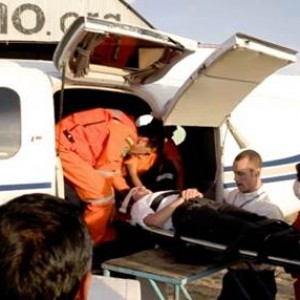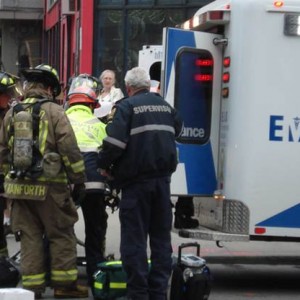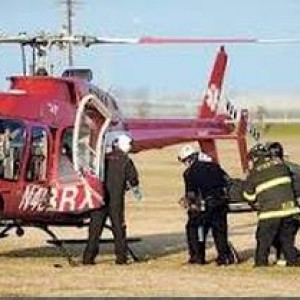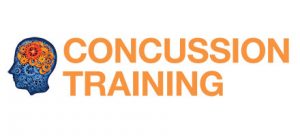Transporting the Spinal Patient
Once the injured person with a suspected spinal injury has been packaged and prepared for transport, the appropriate agency will determine the best vehicle for the purpose given the time and distance to an appropriate facility.
Final preparation before transport should include the following points:
- The airway must be clear and secured. If there is any doubt as to the integrity of the airway, Advanced Life Support personnel should consider the use of artificial airways including the laryngeal mask or endotracheal tube. This may necessitate additional medication including anaesthetics and analgesics.
- Ventilation must be satisfactory and oxygen being delivered. Once again, if ventilation is not satisfactory, artificial ventilation utilising a mechanical device will be required.
- The blood pressure must be stable, and intravenous fluid lines be in place in case additional fluid is required.
- In isolated spinal cord injury, blood pressure is sometimes below that of an average person of the same age and health: this condition is sometimes referred to as “spinal shock” and does not of itself require specific treatment.
- However, in the case where there is other trauma and bleeding present, the more common cause for a decreased blood pressure is fluid or blood loss, and intravenous replacement may be warranted. This is obviously for determination by the Advanced Life Support personnel or medical team present.
- The injured spine must be immobilised at, above and below the level of injury, and all immobilisation devices checked and reassessed for tightness. Limbs should be secured so they do not extend beyond the spineboard or stretcher where they can be injured, and padding placed under bony prominences of the pelvis, elbow, feet etc. to prevent pressure on the skin.
- All documentation of the injury and treatment provided must be completed so it can be handed over to the attending transport staff
- For long-distance transfers or a considerable time will elapse before arrival at definitive hospital, the placement of a nasogastric tube into the stomach and an indwelling catheter into the bladder should be considered to prevent distension of the stomach, vomiting and compromise of future bladder function
- The receiving hospital or spinal unit should be contacted, made aware of the injured person’s condition, treatment and progress, and be confirmed as ready to receive the incoming injured person.
In short:
- Airway clear and secured
- Ventilation is satisfactory
- O2 100% at 8 litres/minute
- Blood Pressure stable
- IV lines in and secure
- Immobilisation At, Above and Below injury
- Documentation complete
- Pressure over bony prominences relieved
- Nasogastric Tube and Indwelling Catheter placed (if available/trained)
- Spinal Unit and Hospital aware and ready
- Check and tighten straps as necessary
Recent Posts





